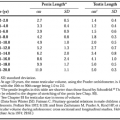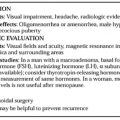TREATMENT
Part of “CHAPTER 63 – OSTEOMALACIA AND RICKETS“
In patients with osteomalacia, the goals of treatment are (a) to correct hypocalcemia and the related symptoms and to prevent the consequences of hypocalcemia, including seizures and cataracts; (b) to correct and prevent skeletal deformities and changes resulting from secondary hyperparathyroidism; and (c) to prevent hypercalcemia, hypercalciuria, and renal complications, including stone formation, nephrocalcinosis, and renal damage.
Vitamin D2 and several of its derivatives are available in the United States. Vitamin D is marketed in 50,000-IU (1.25-mg) capsules for oral administration, in sesame oil (500,000 IU or 12.5 mg/mL) for injection, and in propylene glycol (250 IU or 6.25 μg/drop; 8000 IU/mL) for oral administration. The advantages of vitamin D are that the cost is modest and it often is effective even in patients with abnormal vitamin D metabolism. The disadvantages of vitamin D are that several weeks may be required before optimal therapeutic effectiveness is achieved, the therapeutic dose is near the toxic dose, and the bioactivity persists after its administration is discontinued.
The metabolite 25(OH)D3 is available in capsules of 20 and 50μg. The drug may be particularly useful in patients with hepatic disease and impaired synthesis of 25(OH)D3. Its onset of action is more rapid than that of vitamin D, and it has similar disadvantages. However, the half-life of 25(OH)D3, 2 to 3 weeks, may be shorter than that of vitamin D2, which is stored in fat, so that the biologic effects after cessation of administration may not be as long-lasting as those of vitamin D2.
The metabolite 1,25(OH)2D3 is marketed as capsules of 0.25 and 0.50 μg. The advantages of the drug are its rapid onset of action and rapid disappearance of its biologic effects after discontinuation. Its half-life is <6 hours. One disadvantage is that hypercalcemia may occur after long-term treatment during which the abnormal calcium metabolism has been stabilized.78 The hypercalcemia can be treated by discontinuing administration of the drug and is prevented by decreasing the dose. Hypercalcemia occurs fairly frequently, so patients must be followed up closely. Treatment with 1,25(OH)2D3 is most useful in diseases in which its synthesis by the kidney is impaired. Sometimes it is of value in disorders that have resistance to its effects at the cellular level. In these cases, higher doses are required.
Stay updated, free articles. Join our Telegram channel

Full access? Get Clinical Tree






